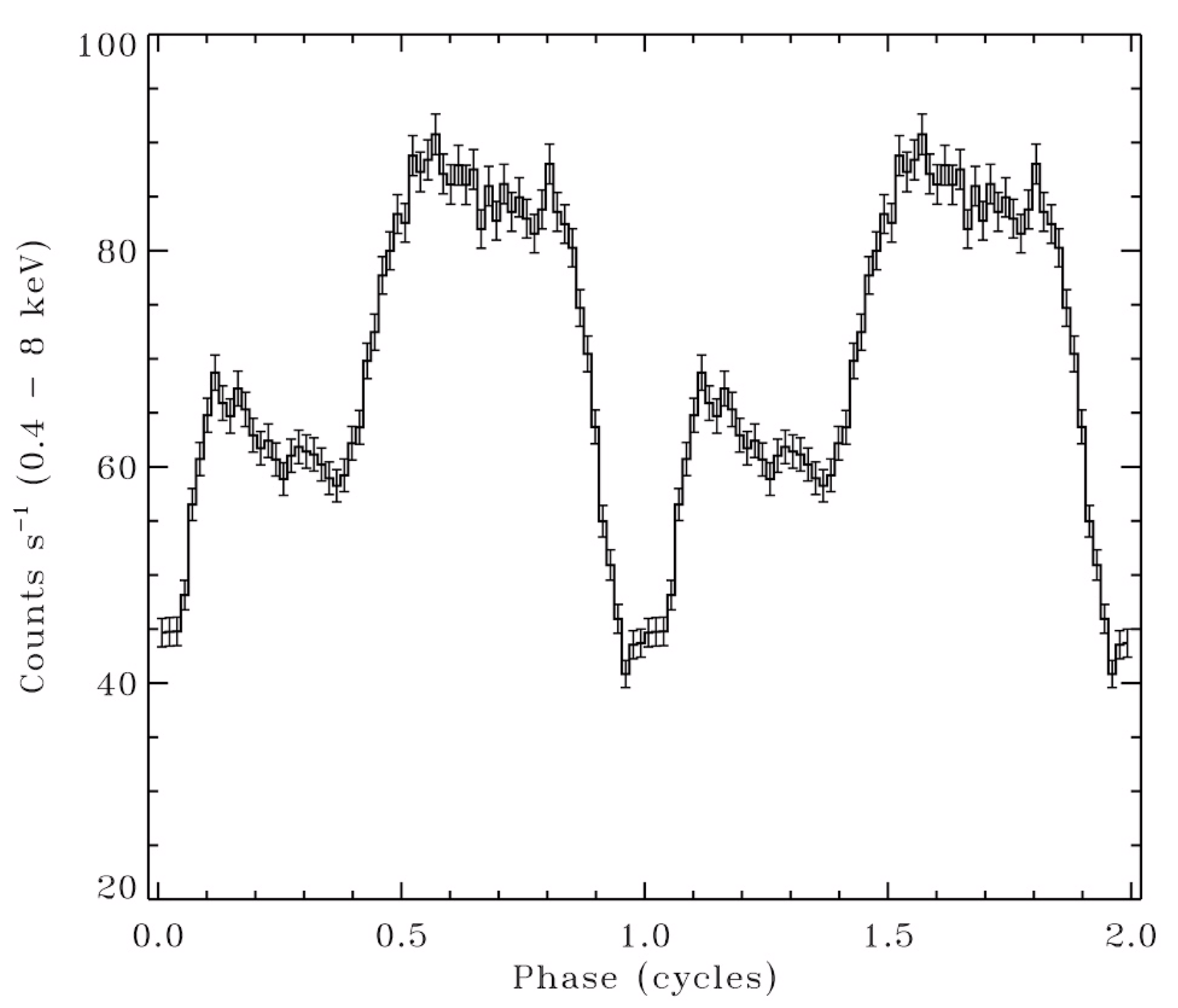NICER / ISS Science Nugget
for November 28, 2019
NICER discovers 9.29 sec pulsations in RX J0209.6-7427
On 21 November, 2019, JAXA's ISS payload MAXI detected transient X-ray
emission in the direction of the Small Magellanic Cloud (SMC) and called
it MAXI J0206-749. A follow-up observation by NASA's Swift observatory
determined that the source was, in fact, the previously known X-ray
emitter RX J0209.6-7427, last seen by the European ROSAT mission in
1993.
Following up on the MAXI and Swift observations, NICER quickly
discovered that RX J0209.6 is pulsating with a period of 9.29 seconds.
The NICER and MAXI teams jointly published this result as an Astronomers
Telegram (Iwakiri et al., ATel #13309); the folded pulse profile is
shown in the accompanying figure. NICER's initial detection of the
overall source count rate was approximately 77 counts per second. It
has been steadily rising and NICER is now conducting simultaneous
observations of the source with NASA's NuSTAR (high-energy X-ray)
observatory.
Available evidence suggests that RX J0209.6 is a high mass X-ray binary.
It is only the second known to lie within the Magellanic Bridge that
connects the Small and Large Magellanic Clouds. Over the next few
weeks, we hope to determine the binary's orbital parameters.

Figure:
The phase-folded X-ray light curve of RX J0209.6-7427 as measured by
NICER. (T. Strohmayer, NASA GSFC)
<< Previous
Main Index
Next >>